How To Structure Your Dissertation? A Step By Step Guide
Writing a dissertation can feel like climbing a mountain—stressful, overwhelming, and sometimes confusing. One of the biggest mistakes students make is jumping into writing without first understanding the importance of dissertation structure. Think of it, like building a house—you need a strong framework before adding all the details. A well-structured dissertation makes your research clear, logical, and easy to follow. It also shows your ability to organise complex information, which is something examiners really look for.
But what exactly does the best dissertation structure look like, and how do you get it right from the beginning?
In simple terms, dissertation structure refers to the layout of your work—from the title page all the way to the appendices. Each part has a purpose and getting it right can seriously boost your final grade.
In this step-by-step guide from Finewriters.co.uk, we’ll break down each section, so you know exactly what to include and where.
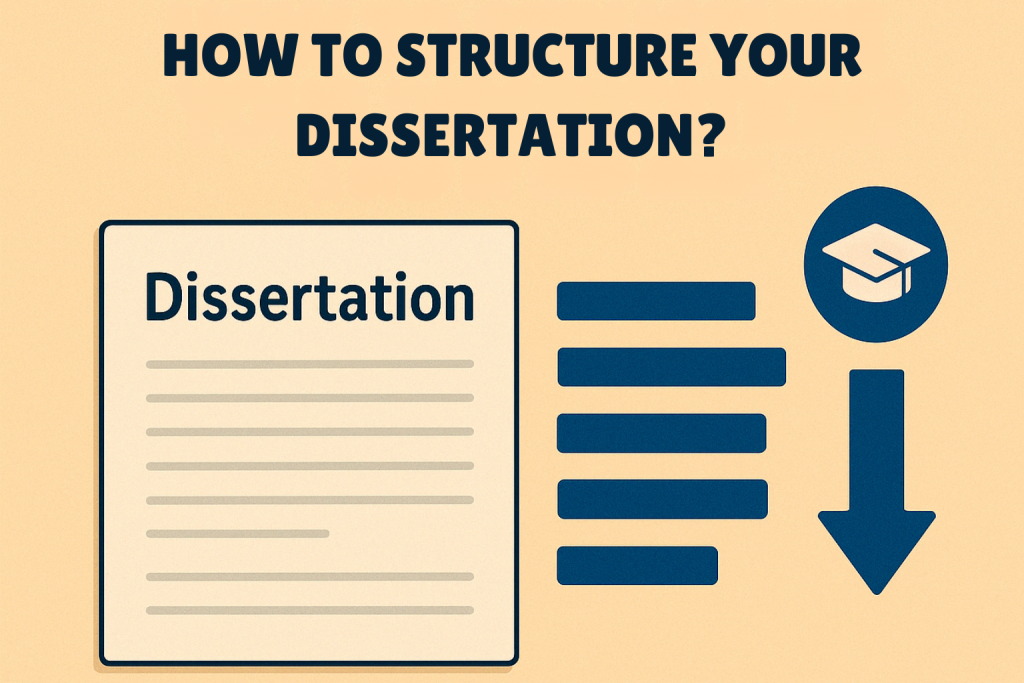
Title Page

The title page is the first thing anyone sees in your dissertation, so it needs to look clean and professional. Even though it’s simple, it’s an important part of your overall dissertation structure. This page usually includes your dissertation title, your full name, your university’s name, your course, and the submission date. Some universities might also ask for your student ID and supervisor’s name.
It might seem like a small detail, but a proper title page sets the tone for the rest of your work. First impressions matter—even in academic writing, so make sure this page is neat and correctly formatted. It’s the first step toward creating the best dissertation structure possible.
Acknowledgements (Optional)
The acknowledgements section is your chance to thank the people who helped you during your dissertation journey. It’s usually placed after the title page and before the abstract. You can mention your supervisor, friends, family, or anyone else who supported you. While it’s optional, it adds a personal touch to your dissertation structure.
Abstract
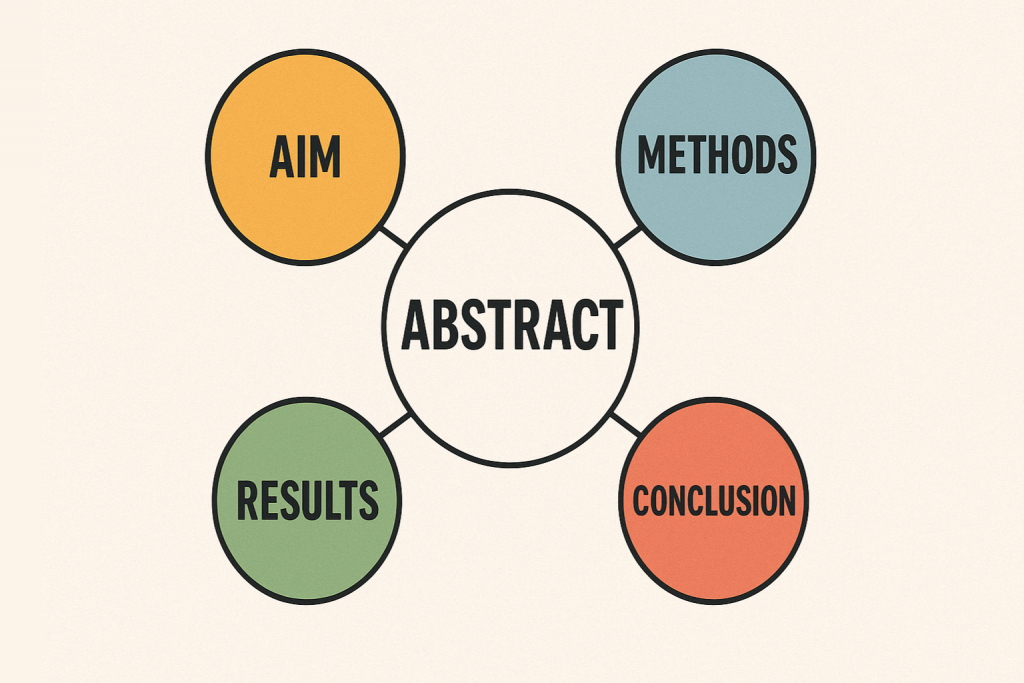
The abstract is like a mini version of your entire dissertation. It gives readers a quick summary of what your research is about. This section usually includes your main aim, the methods you used, a few key findings, and your overall conclusion. It helps people decide if your dissertation is relevant to their interests. Even though it comes first in your dissertation structure, it’s often written last—once everything else is complete. Keep it clear, concise, and avoid adding too much detail. Think of it as your dissertation’s elevator pitch—short, sharp, and straight to the point.
Table of Contents
A proper table of contents makes your dissertation easy to navigate. It lists all your main chapters, subheadings, and page numbers, giving your work a clear flow. Most students use automatic tools in Word or Google Docs to create it. It’s a key part of a clean, organised dissertation structure—and a feature of the best dissertation structure guides.
Introduction Chapter
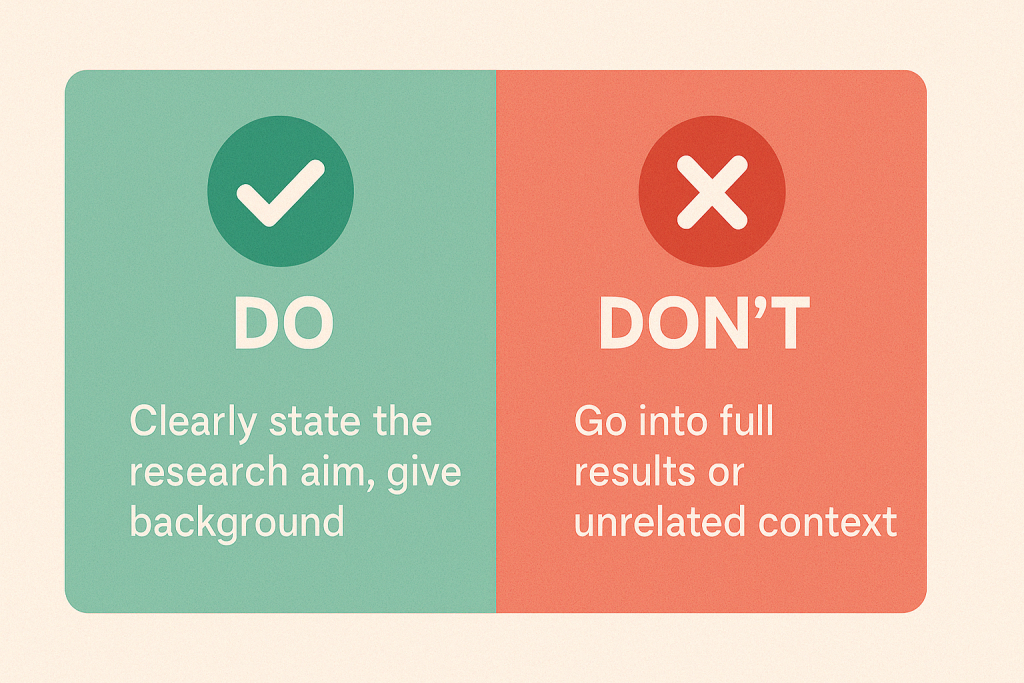
The introduction chapter is where you lay the foundation for everything that follows. It’s the first major section in your dissertation structure, and it sets the scene for your entire research project. Start by introducing your topic in a clear and engaging way, giving just enough background so readers understand what you’re focusing on.
Next, clearly state your research question and your main objectives. What exactly are you trying to find out? What problems are you trying to solve? This helps readers follow your direction and understand the purpose behind your study.
Then, explain why your topic matters. What’s the significance of your research? Why should anyone care about it? Whether it’s filling a gap in current knowledge or solving a real-world issue, it makes the importance obvious.
Finally, give a quick overview of what’s coming next. Briefly mention each chapter—like the literature review, methodology, results, and conclusion—so readers know what to expect. A well-written introduction is your chance to hook your audience and guide them through the best dissertation structure with confidence.
Literature Review
The literature review is where you show that you’ve done your homework. This section proves you understand the existing research in your subject area and can engage with key theories, authors, and debates. It’s a big part of your dissertation structure because it builds the foundation for your own research.
To organise your literature review, start broad and then narrow down. Begin with general ideas or studies and slowly focus on the ones most relevant to your topic. Group similar themes together and discuss how different researchers have approached the topic.
One of the most important things to do here is to spot gaps in the research. Maybe there’s a topic no one has fully explored, or perhaps a method that hasn’t been tried. That gap is where your dissertation fits in, so make sure to highlight it clearly.
Rather than just summarising studies, critically compare them. What did they find? What are their limitations? Doing this helps you develop your own argument and shows that your research is needed. A solid literature review doesn’t just list what’s been said—it explains what’s missing and how your work adds something new to the conversation. That’s the kind of detail that makes for the best dissertation structure.
Methodology
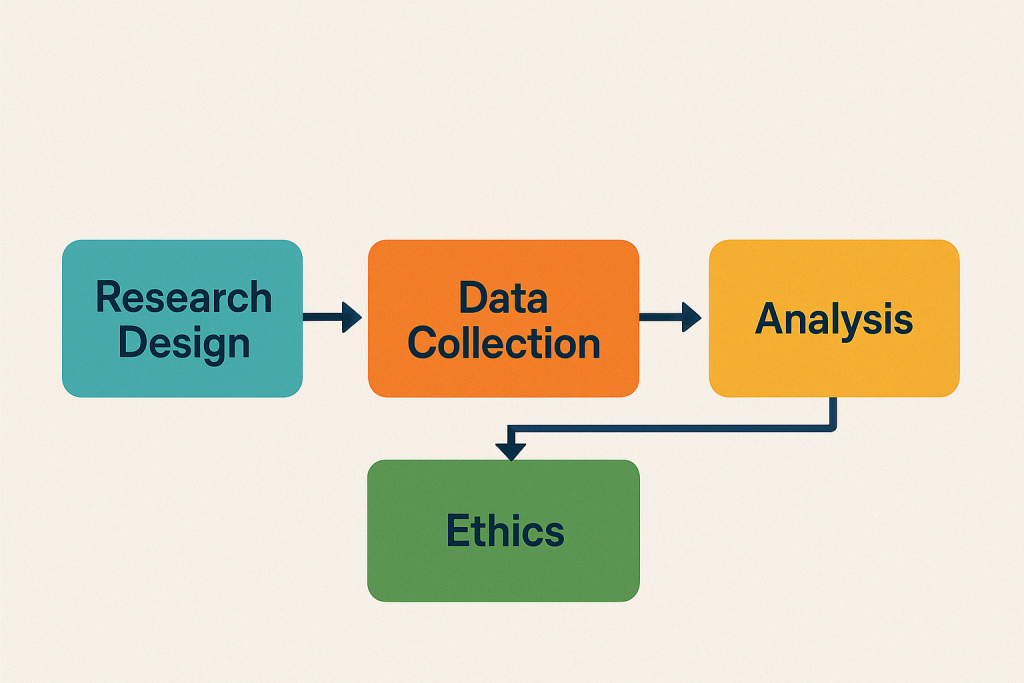
The methodology chapter explains how you carried out your research, making it a vital part of your dissertation structure. This section tells readers what you did, how you did it, and why you made those choices.
Start by describing your research design—was it qualitative, quantitative, or a mix of both? Then go into the details of your data collection methods. Did you use surveys, interviews, experiments, or case studies? Be specific. Explain where your data came from and how you selected participants or materials.
Next, talk about your data analysis. How did you make sense of the information you gathered? Did you use any software, coding techniques, or statistical tools?
Don’t forget to include any ethical considerations. Did you get consent from participants? Did you follow any guidelines to protect privacy or avoid bias? Even if you think these points are small, they matter a lot in academic work.
Finally, justify your choices. Why did you pick this approach instead of another? Showing that you’ve thought carefully about your methods builds trust in your research. A well-written methodology helps others understand your process and proves your work is both solid and reliable—key ingredients in the best dissertation structure.
Results
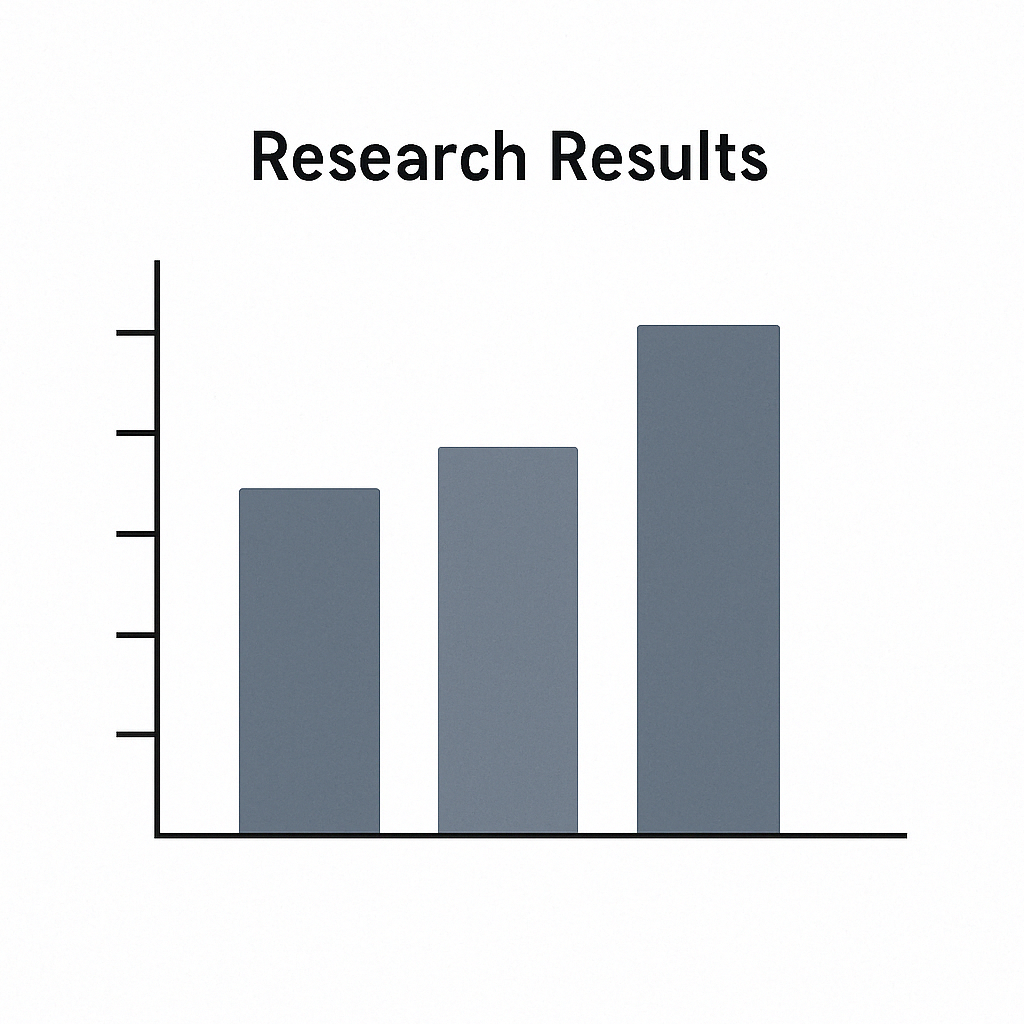
The results section is where you present what you found during your research. It’s all about sharing the data without jumping into analysis just yet. This part of your dissertation structure should be clear, factual, and well-organised.
Start by outlining the key findings based on the methods you used. If you conducted interviews, summarise the common responses. If you ran a survey, include stats or percentages that stand out. Use tables, charts, or visuals to make complex data easier to understand—they’re not just for decoration; they help readers see the results quickly.
Stick to the facts. Avoid interpreting the data or linking it to the bigger picture here—that belongs in the discussion chapter. Just focus on what the data shows, not what it means (yet). Keeping this section neat and to the point helps the rest of your dissertation structure flow better and keeps your readers on track.
Discussion
The discussion chapter is where you dig into what your results actually mean. This is one of the most important sections in your dissertation structure because it links your findings to the wider world.
Start by interpreting your results. What do the numbers, quotes, or themes really tell you? Were your expectations met? Did anything surprise you? Don’t just repeat what’s in the results section—go deeper.
Then, compare your findings with existing literature. Do they match what previous studies have found, or are they different? If there are differences, try to explain why. Maybe you used a new method, or your participants had a unique background. This shows you understand your field and where your work fits in.
You should also talk about the implications of your findings. How could they be useful in real life, future research, or policy-making? And be honest about the limitations of your study. No research is perfect, and pointing out any weaknesses (like small sample size or time constraints) actually strengthens your credibility.
This chapter pulls everything together, helping readers see the bigger picture. A good discussion ties your work back to your research question and proves your dissertation was worth doing. It’s where your best dissertation structure really starts to shine.
Conclusion
The conclusion is your final chance to wrap things up neatly. It should summarise the key points of your dissertation without introducing anything new. Start by briefly restating your research question and the main findings. Then explain how your objectives were met and what the research achieved overall.
It’s also a good idea to mention any suggestions for future research. Maybe your study raised new questions or highlighted areas that need more investigation. Keep this section clear and focused, giving your readers a strong sense of closure. A well-written conclusion brings your whole dissertation structure full circle.
References/Bibliography
This section lists all the sources you used throughout your dissertation. Whether you’re using APA, MLA, Harvard, or another style, make sure everything is consistent. Accurate referencing not only gives credit where it’s due but also shows academic honesty. It’s a small but crucial part of the best dissertation structure.
Appendices
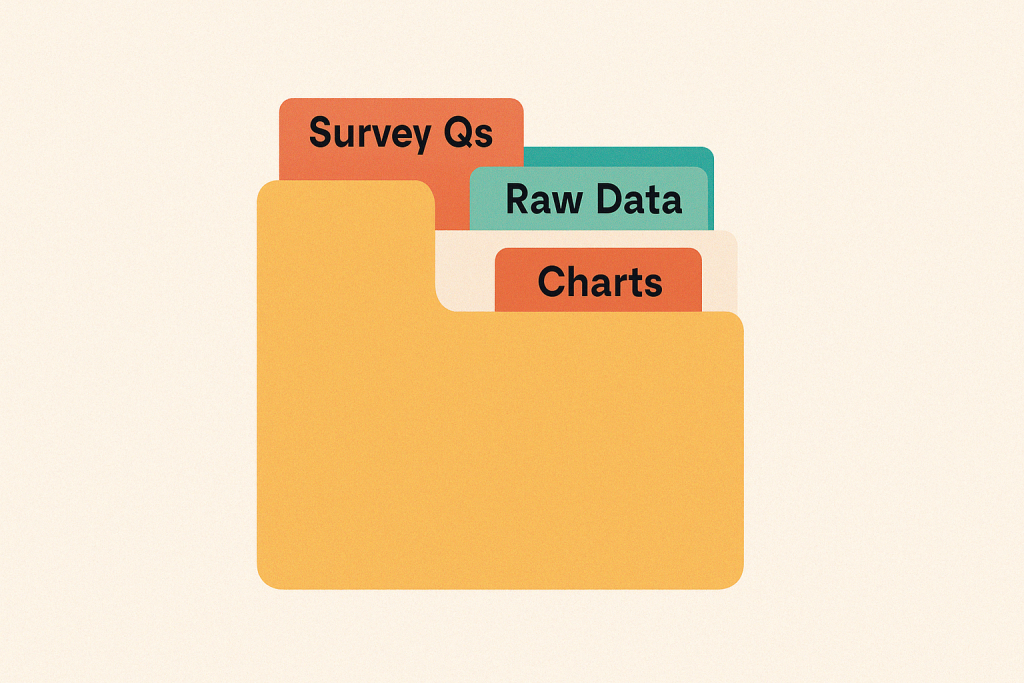
Appendices are where you include extra materials that support your research but are too detailed for the main chapters. These might be surveys, interview questions, raw data, or charts. Only include them if they’re relevant and helpful. Appendices help keep your main content clean while still giving access to important info.
Final Tips for Structuring Your Dissertation
Before you submit, double-check that your dissertation structure is solid from start to finish. Use clear headings and subheadings to guide your reader. Make sure your formatting is consistent—same font, size, and spacing throughout. Always proofread for typos, grammar issues, and flow. Don’t forget to follow your university’s specific formatting guidelines—they matter more than you think. And finally, give yourself time to review everything with fresh eyes. A well-structured dissertation is not just easier to read—it makes your work look more polished and professional.
If you ever feel stuck, Finewriters.co.uk has resources and expert help to guide you toward the best dissertation structure for your project.
